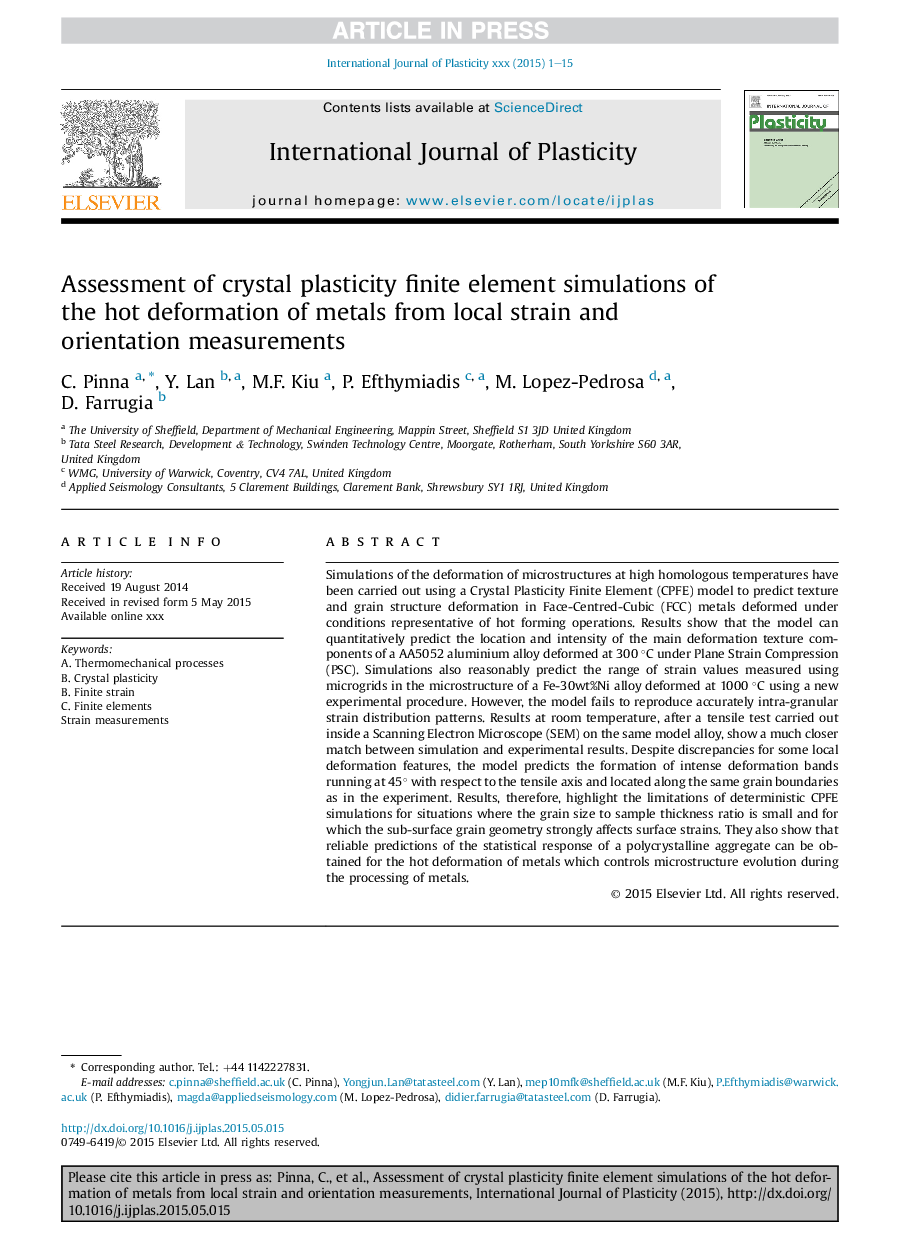| Article ID | Journal | Published Year | Pages | File Type |
|---|---|---|---|---|
| 7174975 | International Journal of Plasticity | 2015 | 15 Pages |
Abstract
Simulations of the deformation of microstructures at high homologous temperatures have been carried out using a Crystal Plasticity Finite Element (CPFE) model to predict texture and grain structure deformation in Face-Centred-Cubic (FCC) metals deformed under conditions representative of hot forming operations. Results show that the model can quantitatively predict the location and intensity of the main deformation texture components of a AA5052 aluminium alloy deformed at 300 °C under Plane Strain Compression (PSC). Simulations also reasonably predict the range of strain values measured using microgrids in the microstructure of a Fe-30wt%Ni alloy deformed at 1000 °C using a new experimental procedure. However, the model fails to reproduce accurately intra-granular strain distribution patterns. Results at room temperature, after a tensile test carried out inside a Scanning Electron Microscope (SEM) on the same model alloy, show a much closer match between simulation and experimental results. Despite discrepancies for some local deformation features, the model predicts the formation of intense deformation bands running at 45° with respect to the tensile axis and located along the same grain boundaries as in the experiment. Results, therefore, highlight the limitations of deterministic CPFE simulations for situations where the grain size to sample thickness ratio is small and for which the sub-surface grain geometry strongly affects surface strains. They also show that reliable predictions of the statistical response of a polycrystalline aggregate can be obtained for the hot deformation of metals which controls microstructure evolution during the processing of metals.
Keywords
Related Topics
Physical Sciences and Engineering
Engineering
Mechanical Engineering
Authors
C. Pinna, Y. Lan, M.F. Kiu, P. Efthymiadis, M. Lopez-Pedrosa, D. Farrugia,
